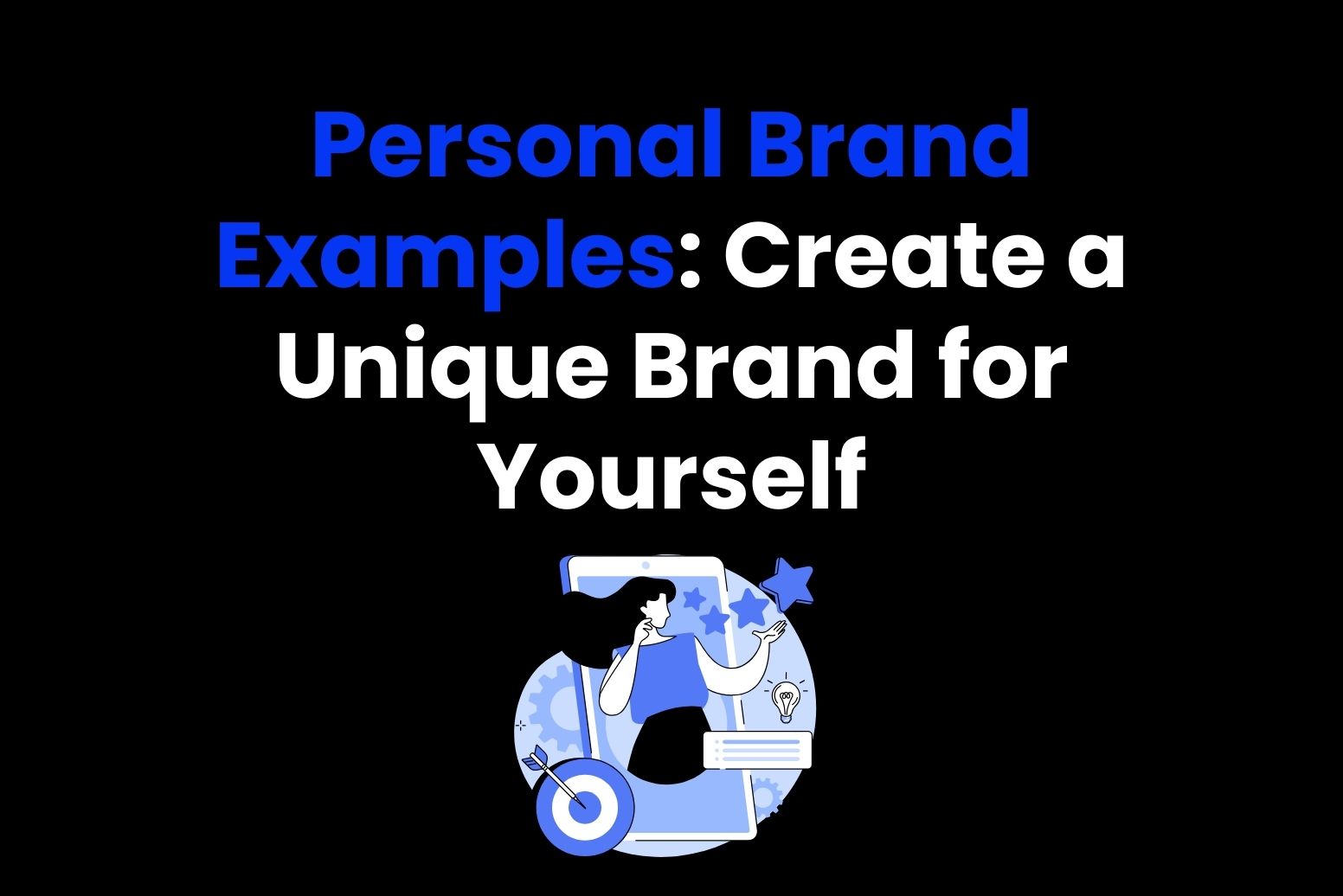In today’s digital world, personal branding is more important than ever. If you are an entrepreneur, a creator, or a professional, creating a unique personal brand is a way to be ahead of the game in terms of competition. For that, we will be studying all the main strategies of great personal branding, give you tons of examples of top successful personal brand examples in different fields and try to discover what everyone will find useful in terms of building your own unique individuality. Let’s now go directly into the personal branding so as to understand how to turn identity into an asset.
Part 1: Understanding Personal Branding
Personal branding means much more than just the buzzword itself; in today’s competitive world, this is what can make the difference. This section will elaborate on the essentials of personal branding, from building authenticity, consistency, and a powerful story. It would all be in the understanding of the core concepts that would establish the foundation for a great and memorable personal brand.
Key Elements of a Strong Personal Brand
A good personal brand depends on a few essential things that distinguish you from the rest in your industry. These are authenticity, consistency, and storytelling.
- Autenticity: Authenticity is the base of any personal brand examples. You need to show off your unique qualities, values, and experiences, so your audience gets to know the person behind the brand.
- Consistency: Consistency breeds trust. Whether it’s posting on social media, creating a blog post, or speaking at an event, your message and tone need to stay consistent to further drive your brand.
- Storytelling: Storytelling enables you to emotionally connect with your audience. In other words, a well-narrated story can better present your personal brand
Engagement is not just a posting activity but also something about meaningful interaction. Encourage people to talk about your brand, whether it is via a private message or a public reply. Finally, the most important thing: be consistent in posting, as well as adapt to each of the platforms’ styles.
The Role of Social Media in Personal Branding
Personal branding via social media is very important because you will be able to build a relationship with your reader, to spread you knowledge there and show them who you are. The key is choosing the right ones and engaging effectively these platform.
- LinkedIn: This is the ideal one for professionals looking to establish credibility, network with industry leaders, and share thought leadership content.
- Instagram: It is ideal for visually driven brands and those who want to connect with a younger, more lifestyle-focused audience.
- TikTok: It provides an opportunity for creativity where one can showcase his personality, entertain himself, and have a viral reach.
- Twitter: Twitter is an ideal platform to converse and get up-to-date news on whatever’s going around in any particular industry.
It’s more than just posting content. That’s about relationships that matter. Respond to comments, ask questions and share insights — to engage with your users. Create a community around your brand by sparking conversation whether through direct message or public replies. Consistency is important too—keep a regular schedule of posting and tailor content to each platform’s style.
The Power of Content Creation
Content creation is a very effective tool for building and reinforcing your personal brand examples. By producing valuable content, you are able to demonstrate your expertise, connect with your audience, and build authority in your niche.
- Blogs: Blogs allow you to write on topics in-depth, providing solutions to problems and showing your knowledge on them. SEO-optimized blog posts can also drive organic traffic to your website, increasing your brand’s visibility.
- Podcasts: Podcasts are an excellent medium for sharing insights, conducting interviews, and building a loyal following. The personal nature of podcasts allows you to connect with your audience on a deeper level.
- Youtube channels: YouTube Channels are the chance to show off your skills through video tutorials, behind-the-scenes shots, or vlogs. The best way to build a personal connection is face-to-camera content.
To build authority, your content should focus on providing value to your audience. Share knowledge, address pain points, and answer questions. Over time, consistent content creation will position you as a trusted voice in your industry, attracting opportunities for collaborations, speaking engagements, and partnerships.
Part 2: Top Personal Brand Examples
Industry-Specific Personal Brands
Entrepreneurs: Elon Musk and Sara Blakely: Elon Musk is an excellent example of an entrepreneur whose personal brand has become intertwined with his ventures—Tesla, SpaceX, and Neuralink. Elon Musk has done quite a lot by giving an idea, risking to accomplish it, and trying something that is farfetched. He has become popular and a true embodiment of a leading innovation.
Spanx creator Sara Blakely built her personal brand based on, empowerment and innovation. In her story of an idea becoming a multi-billion dollar business speaks to aspiring entrepreneurs and working women.
Creators: Casey Neistat and Lilly Singh: Casey Neistat is a filmmaker and YouTube personality who has developed personal brand examples through consistent quality, relatable content, and great storytelling abilities. Authenticity and a willingness to take risks have earned him a following.
Lilly Singh, who started off with her YouTube channel and later her late-night talk show, has established a personal brand based on humor, relatability, and positive messaging. Her ability to connect with diverse audiences has made her a global influence.
Innovators: Neil deGrasse Tyson and Dr. Jane Goodall: Neil deGrasse Tyson is, on a personal note, building his brand as being an astrophysicist with great science communication talents. Through his lively programs in the TV world, the individual is able to spark science in people and have interest for the universe.
Dr. Jane Goodall, one of the most renowned primatologists, has used conservation and animal welfare as her brand identity. She is widely recognized for her conservation efforts and powerful narration about wildlife.
Celebrity Personal Brands
Celebrities often use their public personas as a Launchpad for a range of personal brands. Oprah Winfrey is a great example—her brand goes from television to books, to a magazine, a network, and even philanthropy. Oprah’s brand stands for empowerment, inspiration, and philanthropy.
Rihanna took her personal brand examples and made an empire out of it by going from music to beauty through Fenty Beauty and then on to fashion. Rihanna is the brand for empowerment, diversity, and breaking walls, which the whole world relates to.
The New Face of Personal Branding
Emma Chamberlain and Marques Brownlee, or MKBHD, are digital persons who have made their personal brands become large brands. Emma made her quirky and authentic and relatable material that has earned her a huge number of followers within these two platforms: YouTube and Instagram.
Part 3: Steps to Build a Personal Brand in 2024
Building a personal brand in 2024 is a collection of strategy, creativity, and consistency. In the ever-changing digital landscape, one must be ahead of trends while remaining true to their unique identity. The following steps outline how to create a personal brand that stands out in today’s competitive world.
Define Your Unique Value Proposition
Your Unique Value Proposition is what makes you different from the rest in your industry. It is the sum of your skills, experiences, and personality that makes you valuable to your audience. Your UVP is the first step in building personal brand examples because it helps you focus on what you offer and why others should care.
Craft a Compelling Personal Narrative
This tool is storytelling for personal branding. You can emotionally connect to your audience and as a result make your brand more relatable and memorable by telling a great personal narrative. At its core, it’s the story of who you are, how you rolled up to where you got and where you’re taking it. .
Create a Professional Digital Presence
Your online presence forms a great aspect of your personal brand examples in the digital era. The digital presence professional helps display your expertise, connects you to your audience, and also makes you creditable and established across a number of different platforms. The digital presence is through social media profiles as well as your website, showcasing the values of your brand and UVP.
Engage with Your Audience Strategically
The most critical part of personal branding is to engage with your audience. Brand building is not just broadcasting but also building relationships and having meaningful interactions. To engage strategically means to be deliberate with the manner and time when you connect with your followers in such a way that each connection adds value to the relationship.
Part 4: Enhancing Your Personal Brand with Arvin AI
Building a personal brand and showing the world that what you do best is a key for brand identity. A good visual identity happens to be one of the key elements of personal branding; hence, you can just create professional branding materials such as logos, social media visuals, and more with the use of Arvin AI to better your brand’s presence in the world. Arvin AI makes the branding process easy, even for those with no design experience. It provides an intuitive platform that allows you to quickly generate customized designs to match your unique style and values.
Key Features of Arvin AI
Arvin AI offers several features that can enhance your personal branding efforts:
- Logo Creation: You can create unique logos that mirror your personal style with Arvin AI. Using AI-driven suggestions, you can easily come up with a logo that aligns with the identity of your brand.
- Branding Visuals Generator: With this tool it allows you to generate different visual assets like color schemes and typography. This means all of your branding materials will look uniform.
- AI-Powered Designs: Arvin AI uses machine learning to suggest design elements based on your inputs. This helps create visually appealing and professional designs without the need for design expertise.
- Customizable Templates: Templates range from any imaginable branding need. Whether it’s for social media posts or business cards, Arvin AI’s templates ensure your content is on-brand and professional.
- Real-time collaboration: With Arvin AI, you are able to interact with other members of the team or designers in real-time; you’re better off getting immediate feedback on how to perfect your designs.
- High-resolution outputs: Any work that Arvin AI completes comes out in high resolution to support online applications as well as print materials, meaning that your brand is always ready to go in a highly polished manner.
Steps for making professional logo for personal brand
Step 1: Visit the Arvin AI Website
Open your browser and navigate to Arvin Logo Maker and start creating a unique logo representing your personal brand.
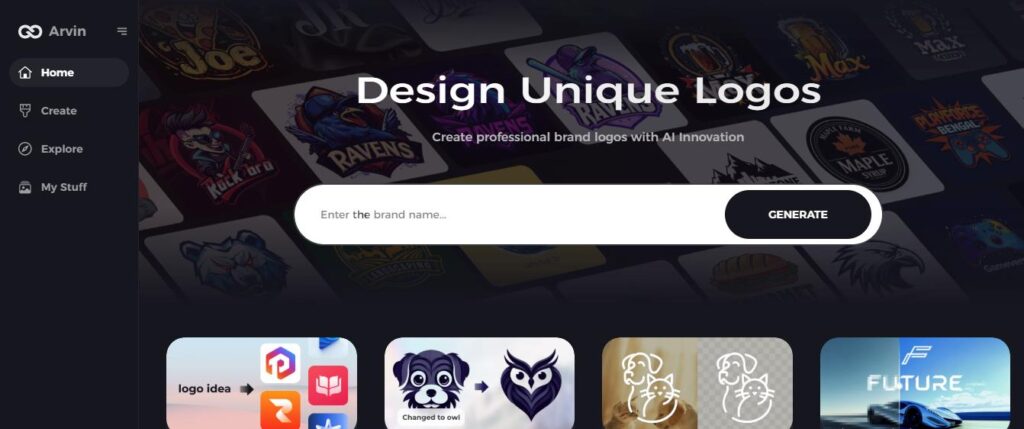
Step 2: Enter Your Personal Details
Input your name and select a category for your personal brand examples. Click on the transparent logo button to enable the AI to design specifically for your brand’s essence and image.
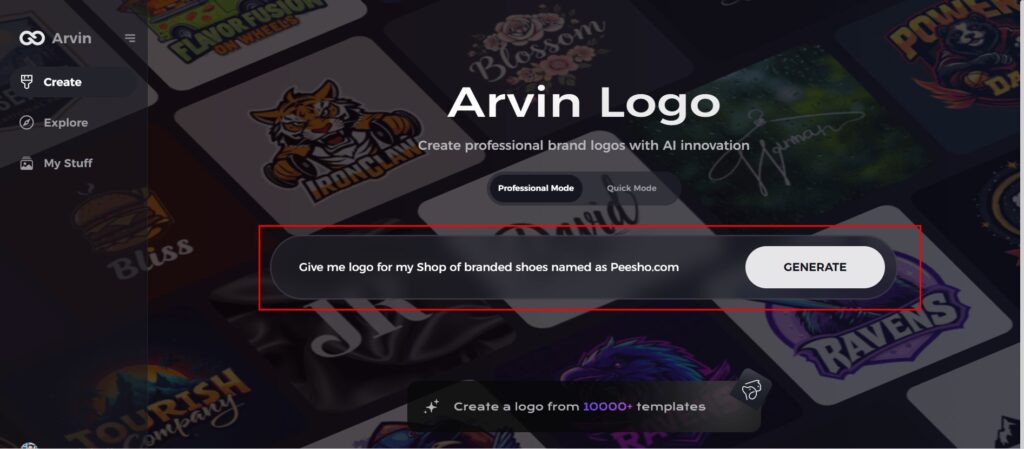
Step 3: Select Your Niche
Select the niche or field that you are in to enable the AI to create logo designs matching your personal values and specifically the market you want to connect with.
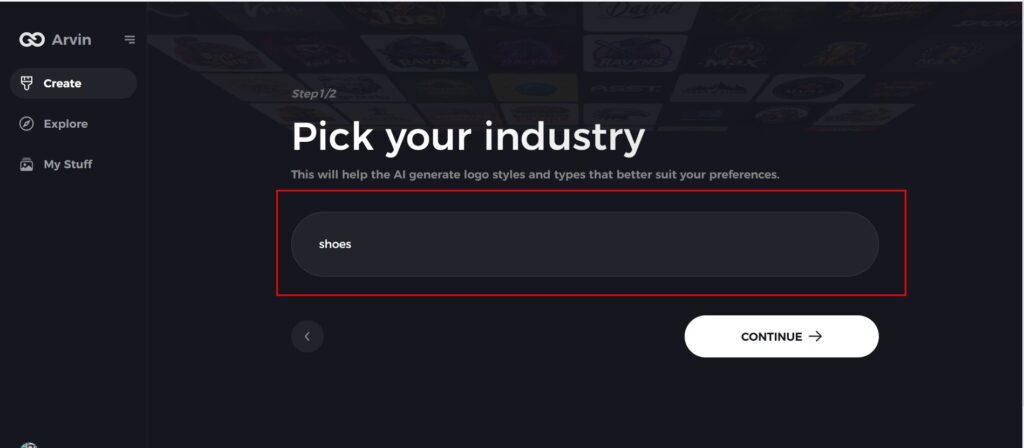
Step 4: Choose a Style
Choose a style that appeals to you. If you don’t know, select the option of “no style” for the AI to create unique designs related to your personal brand.
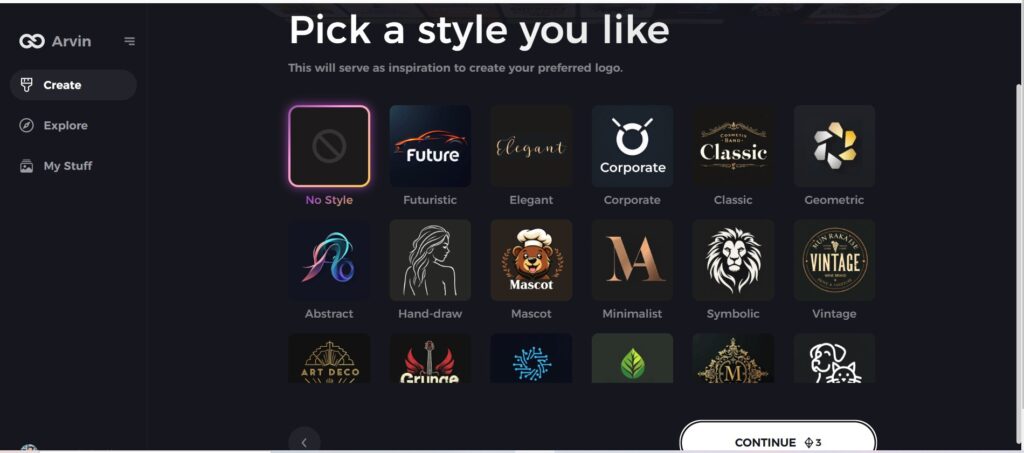
Step 5: View Logo Concepts
Go through the logo options created by Arvin AI. Review the designs and select the one that best fits your personal brand’s identity and message.
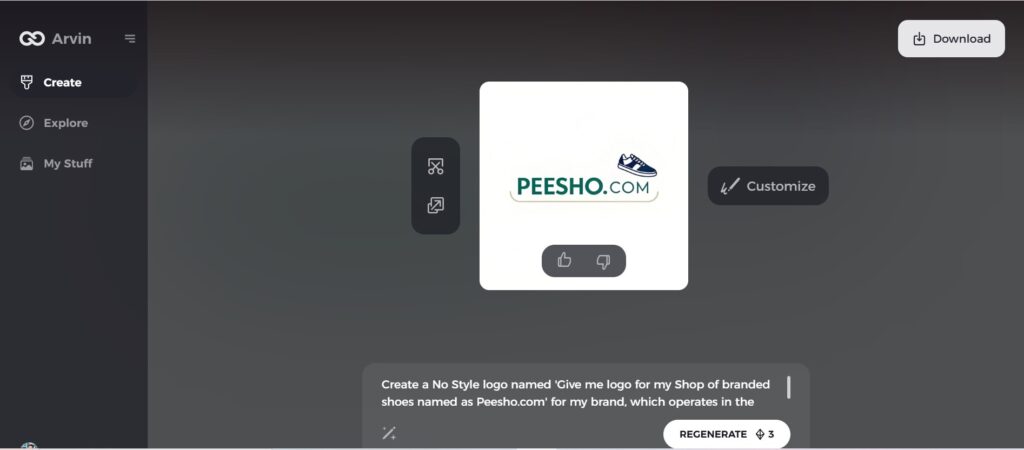
Step 6: Refine Your Logo
Tweak your logo to capture your personal style and aesthetic by adjusting colors, fonts, and icons.
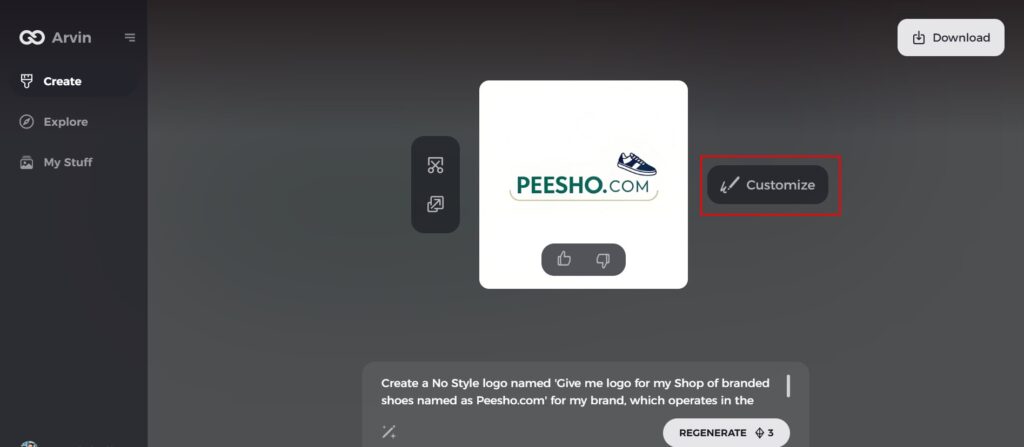
Step 7: Download Your Final Logo
Once you’re happy with your design, download your logo in formats like PNG or SVG. This ensures your logo is ready to use across websites, social media, print, and more, helping establish your personal brand examples professionally.
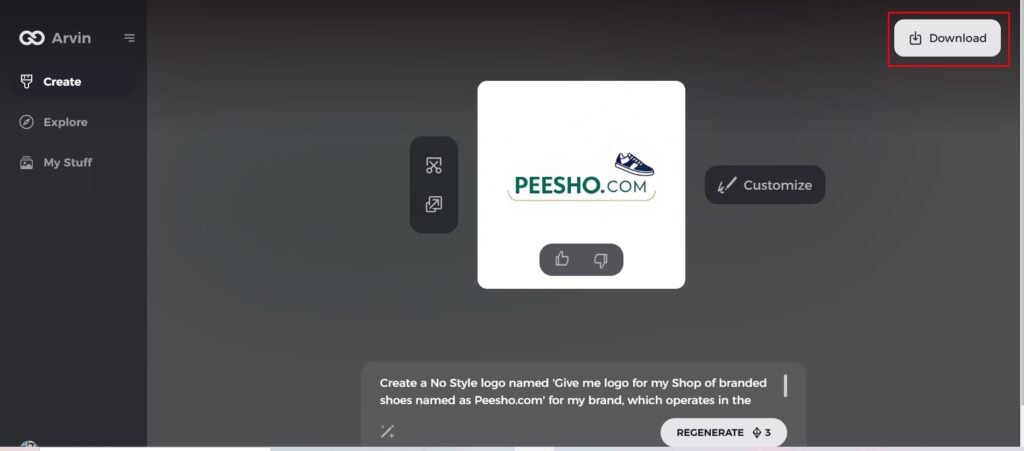
Conclusion
Building personal brand examples in 2024 is essential for standing out and establishing your professional identity. With Arvin AI, it is easy to get good branding materials without the headache of wasting so much time. You will get all your visual assets looking uniformly similar with Arvin AI. With saving you a great amount of time and helps in making professional logo.
FAQs
Why Do Professionals Need Personal Branding?
Personal branding helps professionals to stand out and build credibility. It lets you show the skills and values you have to the client or employer in order to let them know who you are and what you can do.
What Are the Best Tools for Personal Branding?
Some of the best tools include Canva for graphic design, LinkedIn for networking, Grammarly for written content, and Arvin AI for creating branding visuals.
How Long Does It Take to Build a Personal Brand?
Building a personal brand examples is not overnight; it requires consistent effort and months, even years, for establishing your brand completely. You are growing with every piece of messaging and engagement; that’s how consistency will grow you.
Can AI Tools Like Arvin AI Replace Personal Effort in Branding?
While AI tools like Arvin AI make the design process easier. By the Ai power of Arvin Ai you can create professional log that will boost your brand identity to peak level.

